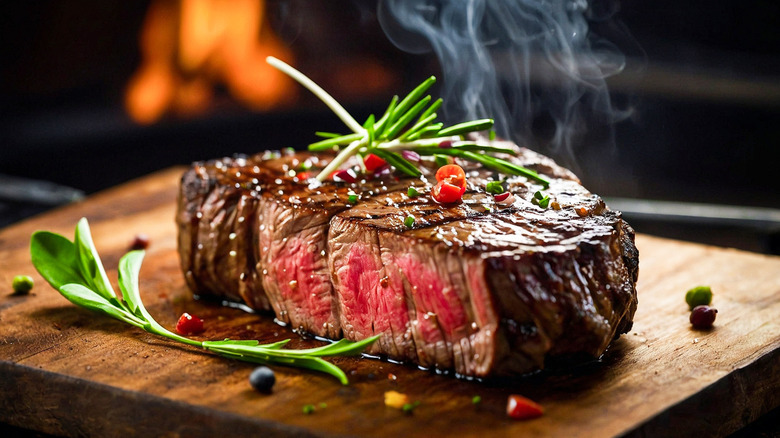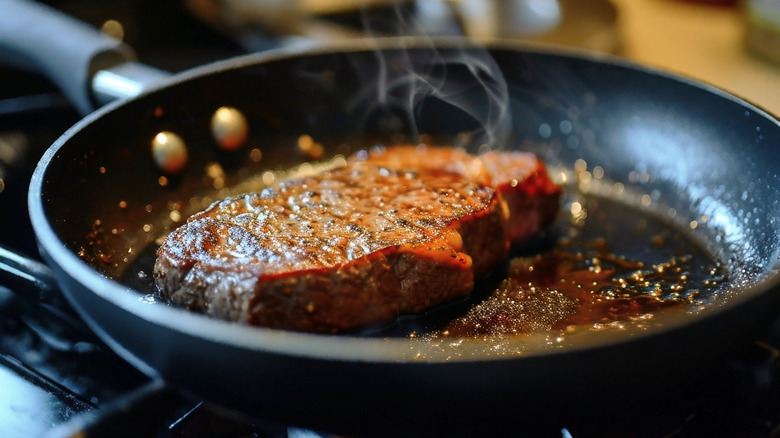Here's How Much A Steak Shrinks After It's Cooked
Something about steak for dinner always felt fancy growing up. The savory smell filling the house — mixing thyme, rosemary, and a hint of butter — was enough to make anyone's mouth water. But the once-massive steak my mom threw onto the skillet always seemed to shrink by the time it made it onto our plates. It was an anomaly. I mean, I signed up for a meal that embodied the saying "your eyes are bigger than your stomach," but instead, I got a smaller piece of meat than I expected. It wasn't my imagination, either; steaks actually tend to shrink by around 25% once cooked, and can even lose more like 30% of their weight. So why does this happen?
No matter what cooking method you choose — frying, grilling, or baking — steaks and all other meats will always shrink to some extent when cooked. This happens for a few reasons. Steak contains water, which begins to evaporate when it comes into contact with heat, and the fat within the meat also starts to render. The juices you see in the pan are a sign that the steak is shrinking, but also simply cooking. In addition, the meat's proteins contract and shorten when heated. This shrinkage and moisture loss becomes increasingly noticeable as the temperature rises.
It's pretty much unavoidable that once it's cooked, a steak will both look smaller and actually weigh less than in its raw form. Luckily, however, there are some things that can reduce the effect. These include choosing the right cut of steak to cook, as well as specific techniques you can use during the process.
How to minimize steak shrinkage during cooking
As delicious as steak is, it can also be quite expensive. Even if you've bought one of the great budget-friendly cuts of steaks available at the grocery store or from your butcher, it can be hard to not wince as your piece of beef shrinks before your eyes. Leaner cuts of beef tend to shrink less than ones which contain more fat and water. So flank or tenderloin are likely to lose less weight than a well-marbled ribeye or brisket.
Cooking at a lower temperature also helps reduce the amount of shrinkage. If you plan to grill your cut, which tends to be done at higher temperatures, make sure to cook it slightly slower to avoid burning it while still achieving that signature sear. Whatever the method, just be sure not to overcook your steak.
Finally, it's important to let your steak rest for a bit after cooking. As it cooks, the heat forces moisture out of the beef. Letting it sit allows some of the remaining liquid to redistribute within the meat. If you cut into it too soon, those juices will spill out over your cutting board or plate. Resting your steak for around five to seven minutes guarantees a moist and juicy steak, which retains more of its size. So the next time you want to cook your favorite cut, whether you're preparing a perfectly seared steak on the stovetop or even air-frying your steak, focus on maximizing your meat by minimizing its shrinkage.

